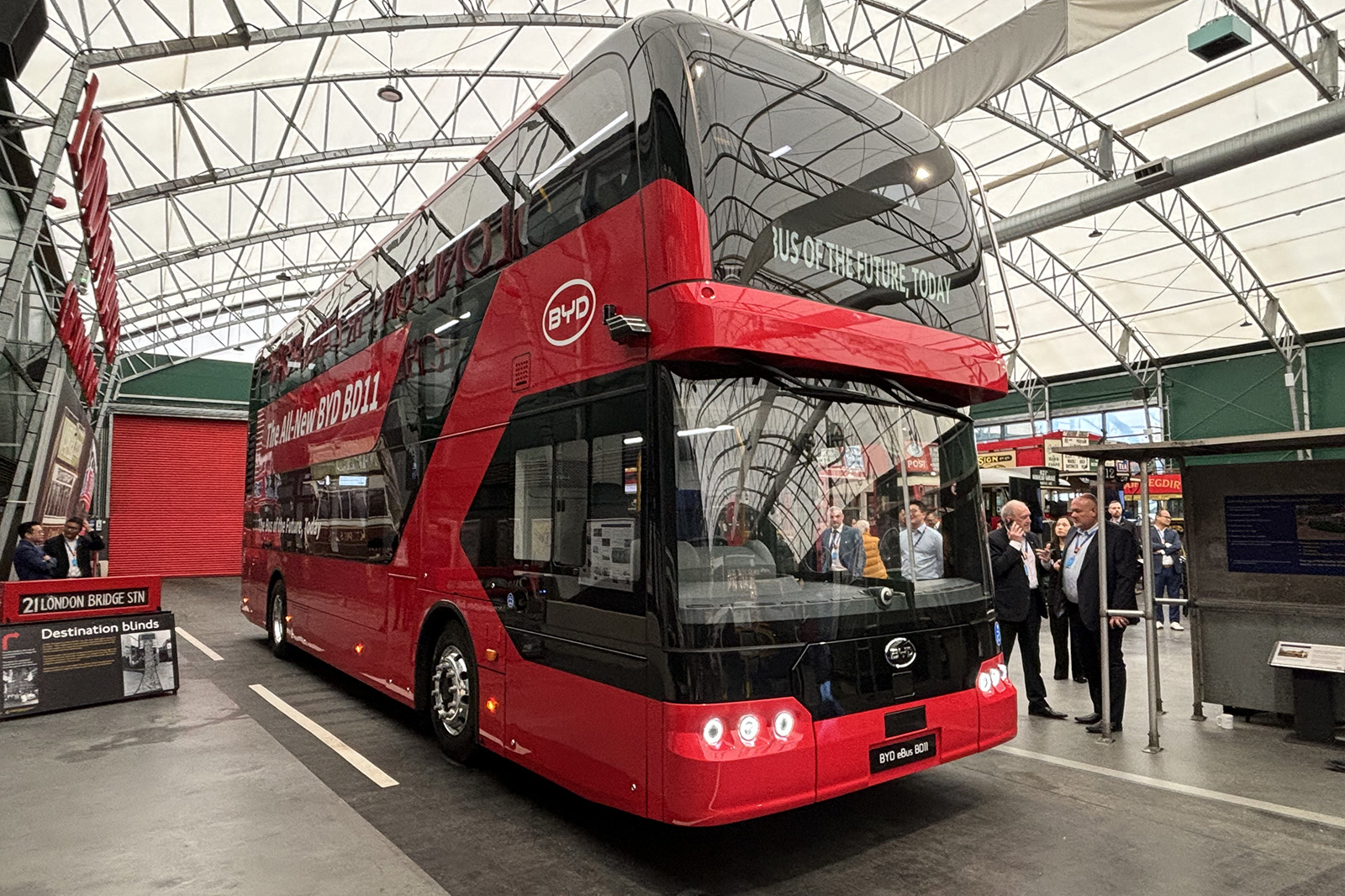Charging is possible at up to 500kW via a pantograph (overhead) connection, but conventional ports are fitted for conventional rapid charging in depots and at public stations – with the possibility to connect more than one charger at a time to boost speed.
BYD remains tight-lipped on precise commercial objectives and volume projections, given the sensitivities around public transport tendering processes, but BYD UK’s commercial vehicle managing director Frank Thorpe said he “hopes” it can replace Wrightbus’s New Routemaster as the default London bus.
That 13-year old hybrid double-decker – commonly known as the Boris Bus, in reference to Boris Johnson, who backed the project while serving as mayor of London – ended production in 2017 and is due to be phased out over the coming years in line with the city’s goal to have an all-electric bus fleet by 2030.
“We genuinely believe it’s a game-changing product in terms of its efficiency, safety and commercial appeal. We believe it’s going to be significant,” said Thorpe.
He stopped short of giving any sales predictions but said: “We’ve had a fantastic reaction from operators and stakeholders – the Department for Transport, Transport for London – and we’re now going to prove what we say.
“That’s the key: we can say all sorts, but we’ve got to prove that is the best bus for the UK public, taxpayers and stakeholders.”

Robert Johnson is a UK-based business writer specializing in finance and entrepreneurship. With an eye for market trends and a keen interest in the corporate world, he offers readers valuable insights into business developments.








